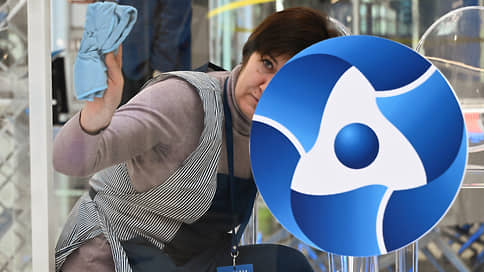Rosatom to invest $600 million in lithium mining in southwestern Bolivia
[ad_1]

Rosatom plans to invest $600 million in the development of a lithium deposit in Bolivia. The state corporation can launch the first stage of the industrial complex in 2025, and in 2027 reach the planned production volume of 25 thousand tons of lithium carbonate per year, which is about 4% of world production. The cost of production from lithium brines in Bolivia, according to analysts, may be about $4 thousand per ton, which is much more profitable than mining from ore in the Russian Federation. Lithium will be needed by Rosatom for the production of batteries at a plant in Kaliningrad, which is scheduled to start operating in the fall of 2025.
Uranium One Group (part of Rosatom) signed a framework agreement with the Bolivian state company Yacimientos de Litio Bolivianos (YLB) on the construction of an industrial complex for the extraction and production of lithium. The state corporation will develop a deposit in the Potosi department in the southwest of the country. The launch of the first stage of the enterprise is scheduled for 2025, and in 2027 the complex will reach its planned capacity of 25 thousand tons of lithium carbonate per year (6% of world production). The volume of Rosatom’s investments in the project is about $600 million.
The industrial complex of Rosatom will be located on the basis of the hydro-mineral spring (salar) Pastos Grandes. The state corporation plans to extract lithium from brines using the Russian technology of sorption extraction. The project won the competition announced by YLB in 2021. Two dozen companies participated in the tender, from which YLB, in addition to the Uranium One Group project, selected bids from four Chinese and American investors. In early 2023, YLB signed an agreement with the Chinese CBC, continuing negotiations with other bidders.
Russian technology makes it possible to extract more than 90% of lithium from the salt marsh, said Alexei Likhachev, head of Rosatom. According to him, the technology is “environmentally friendly” since no chemical compounds are used in the mining process, and water flows back into the salt marshes.
Bolivia, according to Vygon Consulting analysts, contains about 24% of the world’s lithium resources, Argentina is in second place (23%), and Chile is third (13%). These countries are part of the “lithium triangle”, where lithium mining is considered the most profitable.
The cost of extracting lithium from underground brines is $4-5 thousand per ton of LCE (lithium carbonate), and salt marshes in Bolivia, due to a slightly higher content, make it possible to obtain lithium carbonate at the lower limit of this range, says Igor Chausov from ANO EnergyNet Center . World prices for lithium carbonate are several times higher: now the cost of a ton is $42,000, and by 2040 the figure may gradually drop to $35,000, according to Vygon Consulting.
“An important factor is that the left-wing Bolivian government looks like a more reliable partner in the current circumstances, so the choice of Bolivia to launch a lithium mining project seems logical,” says Igor Chausov. Lithium will likely be delivered first by rail through Chile, then by sea, he said.
There is no lithium mining in Russia, so the Russian Federation imports about 9 thousand tons of LCE per year from South America.
Rosatom needs lithium from Bolivia to produce batteries at a gigafactory in the Kaliningrad region with a capacity of 4 GWh per year (about 50,000 electric vehicles), which is scheduled to be launched in autumn 2025. According to Dmitry Babansky from SBS Consulting, the gigafactory will need about 360 tons of lithium carbonate per year.
The state corporation, together with Norilsk Nickel, also plans to develop the Kolmozerskoye deposit in the Murmansk region with a capacity of 45,000 tons of lithium carbonate and hydroxide per year. However, due to the unpreparedness of the infrastructure, the start of production there will not begin until 2028, Kommersant’s interlocutors believe. Estimated production volumes at the fields in Bolivia and Russia will allow Russia to occupy up to 17% of the world market.
Igor Chausov estimates Russia’s need for lithium at 8,000–10,000 tons of LCE per year, taking into account plans to produce lithium-ion batteries. At the same time, Russian lithium resources are mainly ore, their development is more expensive than the development of underground brine resources, he notes. According to Vygon Consulting analysts, Russia will export the lion’s share of lithium abroad due to the growing global shortage: according to their forecasts, the global demand for lithium due to the growth in sales of electric vehicles by 2040 may reach approximately 4.5 million tons of LCE, and the offer will be only 3.5 million tons (see Kommersant dated April 25).
[ad_2]
Source link





